Thank you! Your comment has been submitted successfully. You should be able to view your question/comment here within a few days.
Error submitting comment. Please try again momentarily.
- All Info
- Reviews (249)
- Q & A (0)
- Videos (2)
- Photos
TruRyde Trailer Bearings Races Seals Caps - RG04-020
- Caps
- Standard Grease Cap
- 1.98 Inch O.D.
- TruRyde
Trailer Hub Grease Cap, 1.988" OD Drive In
- Quantity: 2
- Commonly used on 3,500 lbs. trailer axles

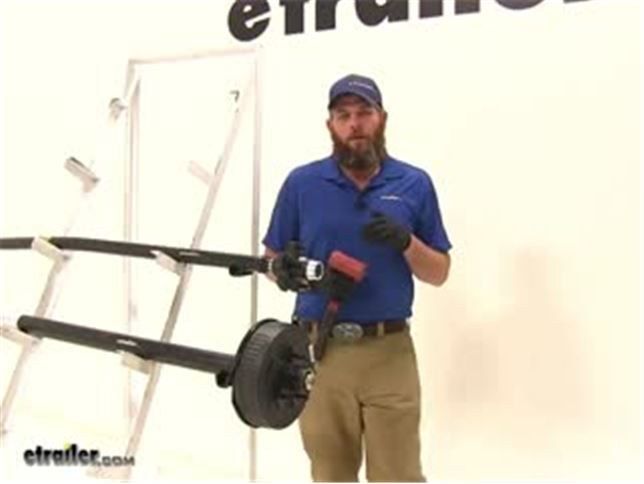

Videos are provided as a guide only. Refer to manufacturer installation instructions and specs for complete information.
Video Transcript for Trailer Bearings Races Seals and Caps Rebuild
Speaker 1: Today we're going to take you through the rebuild process on a couple of hubs. We've got an idler hub, and here we've got a hub and drum assembly. Works with electric rigs, but this can also work for just standard discs, if you've got a disc brake style setup.Basically what we're going to show you is how to get all of the bearings out. How to remove the seal. How to remove the race's if they're damaged, then get them replaced in the proper manner. We'll show you how to use an easy loop hub, which we have here.The first thing we are going to need to do is, get the grease cap off the end.
It can have either a rubber plug in it like this one does, or it can be a solid metal cap.These are pressed fit in there, basically by tapping on them on the back side. To remove them, a deadbolt hammer is typically what we're going to use. We're just going to start tapping as we go around. You'll see a little separation start right here, and slowly it'll work it's way off.Now the next step's going to vary a little bit depending on your axle setup. Do you see this is going to have a keeper that goes around the nut.
And that prevents that from being backed off, or removed. A lot of times you'll have a castle nut, which will have just little tabs that stick off, and there will be a cotter pin that passes through it. Just depending on your application, you need to get the keeper for the nut off. This style we just kind of pry out. A cotter pin you would just remove of course.Once we have that off ...
We'll start to take off the nut here, and the washer that's in behind it. Now yours should look a whole lot more dirty than this. There should be a lot of grease packed in, and through the hub, this one's brand new. We thought it'd be nice to show you the components before the grease was on .. Of our washer that comes off.And then here we're going to have our outer bearing.
Continue to pull that. We're gonig to have our inner bearing here. That sits in the backside of the hub. And we didn't put it in yet, we will show you how to put it in. But a seal would typically be covering the backside here. We'll show you how to use a seal removal tool, or another tool. To get that pried up and out. To get an access to that inner bearing.Now for a drum style like this, that process for disassembly is going to be just the same. One thing to keep in mind if you're using a disc brake setup. You'll have to remove the caliper before the disc is going to come off.Now once we have the spindle exposed, as we said this is going to be really greasy. We want to get all the grease removed, and the first thing we'll do is inspect it. We want to make sure that it looks just like what we have here. Everything's nice and smooth. We don't see any kind of discoloration, or any marring on the metal. Indicating that our bearing's got hot.If you do have any of those symptoms, at this point it's time to replace those bearings. You don't want to repack them. Get new bearings, and put in there. You might have a bearing that's come apart in here. Another surface to ensure is in good condition, is where your seal is going to go. That helps seal all the grease inside of our hub. With a damaged or broken seal, that grease is going to seep out. Either out of the hub, or in this case into our brake assembly.Now if your axle has brakes, we're also going to check the disc. Make sure it doesn't have any issues, or your hub. And this is going to be a hub and drum assembly. The brakes are going to ride on this machine surface. You're going to check that for signs of excessive heat, discoloration, or cracking. And this is our magnet surface. We'll check that surface for the same issues.Now inside the hub regardless if it's a disc brake, it's a drum brake like this. Or just a standard idler style hub. You're going to have an outer race. Would be right here, it's a small tapered piece of metal your bearing sits in, and rotates on. That's basically the outer portion of the bearing.You have the same thing here on the backside. This is called the inner race. Now if those show any signs of wear, overheating, or cracking. Those are also something we'll need to replace, which we'll show you how to do in just a minute.Now, with your brake assembly exposed, if you do have electric brakes like we have here. It's a good idea to check all the components for wear, cracking, maybe missing pieces. Check your pad thickness to make sure those are in good shape. Basically if you have a non working brake assembly and you put everything back together, you're just going to have to take it apart and do it all over again to get back to the brake assembly. This gives you a really good option to be able to change them out.And most applications are going to use a four, or maybe a five bolt flange to hold them in place. And you'll just remove the lock nuts, or sometimes you'll have a hex nut with a lock washer. You want to remove those, and then simply slide your assembly off after you cut the wiring.The friction material itself should also be checked for any kinds of cracking, or overheating. If you have any grease inside the system at all, it's likely it's gotten on those pads. It's a good idea to get those changed. Now as far as the removal of the races go, it's going to be just the same whether we're using an idler style hub like we have here. A drum brake like we have here. You can basically see where the idler is, here in the middle of the hub. It's going to go all the way around there, and we just have this extra material here to provide our braking surface.Now if you're doing a disc brake style job again, it's going to be just the same here with the races living inside of the actual hub portion. You'll just have the discs there for the brakes to make contact. We're going to use this little bit smaller one, it's a little bit easier to manage to show you how to get these out. We've talked about where the races are. The outer here, the inner being closer to the inside, but on the backside of the race there's a little lip. That lip's meant to stick out just a little bit further than the hub, and provide us an area to put our tool on, and help to drive that out.If you look all the way through there on that inner race, you'll see that little lip that sticks out just from the hub slightly, and it gives us enough area to use our tool on. Now generally to remove these you're going to use a punch, similar to this. Some guys will use a screwdriver. Or a piece of pipe. If you have a piece of pipe that's small enough to fit inside of that diameter, you can take that down through and allow it to rest on that lip.Use our punch, and then just need a hammer. And we'll start working that out. We're going to tap all the way around. Kind of equally, and evenly apply the force to get it to come on out of the bottom for us.You can see now as it starts to come out there's going to be a little gap created between the hub and the race. And we can just keep going, bringing it on out. Then you can inspect the inside of the hub surface there. Make sure no damage or anything has occurred, and repeat that same process for the outer race if you plan on removing and replacing that one.Now in the outer flat edge, you can see we're going to have our tapered edge on this side. If we roll our race over to the flat side, typically there's going to be a manufacturers part number on there. That will help you identify which race it is, that you need to go back in your system. If those are rubbed off, worn off, if you can't read them. You can measure the outside, to outside diameter of the race here. It's a good idea to use a micrometer to get it exact.Now here's your basic micrometer. And again, the outside of the race is what we're going to need to measure. You want to go . I set the thickest point there. Looks like this one's going to be about 1.98. That's going to be the measurement you'll want to supply.Now while we've got this out, let's also look at the proper way to measure our bearing. Instead of the outside for the bearing, we need to measure the inside diameter. That's going to be pretty simple. Let's pull that out, find the largest measurement we can. Which here, looks like it's going to be 1.03. With that information, we'll be able to get the correct bearing, and the correct race, so they'll fit together properly and make a full bearing kit for us.Now here's the race, we're going to show you how to get this put back in. Basically just going to press fit inside of our hubs. We need to get it down on there. Kind of like that. And you'll have a couple options. A lot of times you're going to see do it yourself or at homer, just going to use a wooden block. Just place it on there. That's going to get you started, but at that point you'll struggle in getting it to go all the way down into it's seat.Now to take care of that problem, there are several seal drivers that are available. Seal and race drivers that are available out there on the market. It's designed to fit down inside of our race, inside of our hub and get it down there where it needs to go. This is part number ptw83020, has several different sizes, even if you have multiple trailers it's going to do the job.Now the side with the angle on it, is designed to fit down inside of our race. If we use the other side, that's going to be for driving your seal into place. Just want to hold it, and take it on in with your hammer. You'll see, you just want to insure that our race is all the way up against that line on the hub where it's supposed to mate to.Now when it comes time to pack your bearings you're going to have several different ways of doing this. You can just use your hand, is the traditional method. That's going to be the method probably reserved for the very occasional trailer work kind of situation. If you do it once or twice a year, probably get away with it that way.Next you would go to a, kind of a sandwich funnel style almost. If you look inside of there, you can see the bearing. It's located between the two pieces. Just use a grease gun. Start filling that with grease, and that's going to fill our bearing for us. And the third, with this one you're just going to place your bearing down and in. It should be pretty close to center. And then we've got our cone her that's going to go down and secure that.Now I think this style, wastes a little bit more grease than what this style will. This has a dust cap. You can see, you can keep your grease in there, put your dust cap on there and save it for later use. This will be if your going to do it every couple years. And this particular style would be if you're a more regular user.Let's start by showing you how to use a bearing packer. Similar to this. Again, we've just got our grease inaudible 00:11:07 here on the top. And then just slowly start to fill it. Now I like this style quite a bit. I think even regular users might enjoy it, because you can get a really quick visual look at that bearing. You're not going to have to overdo it, or have to much grease.You can kind of see in there now, we're starting to get grease to come out of it. Couple more pumps, we'll be good. You can see we've got grease coming out all the way around. Where all of our bearings are. Got a little bit of excess there. Just take that around the outside of it. And then we should be able to lift it off. And now you can see what we we're talking about. Just a little bit of excess there, that you're just going to wind up wasting.Now we'll take our bearing, we're going to place it right down in our race. And then we'll cap off the back with our seal. Right now our seal's going to fit in just like our race did. It's going to have a little bit of a pressure fit to it. Now very often in this situation, I see people using the four by four method. Kind of here, just placing that on and tapping it. As an option though, if you do have one of these. You can see that's designed to fit right on the top of the seal. And help drive it in.The biggest thing here is, just going to be getting it driven in squarely. You can see, this side's in a little bit further than this side. I'm going to start this side first. Now since we didn't have the opportunity to show you before, we're going to take a look at pulling a seal. Now this is a seal puller, we carry this on our website part number ptw1219. This is meant to hook underneath the seal. And then you kind of pull up on it, and just like our race you'll have to work all the way around that edge. Just bringing it out a little at a time.If you don't have that available. Another option would be a screwdriver. You just kind of get that under the seal, and turn it. And see, that'll allow you to also pop that out. We've taken care of our race. Our inner bearing. Our seal. The last component, before we put our hub back in place is going to be our outer bearing. Now with this bearing, I'll show you the hand packing method.This is definitely . Slightly dirtier method than the bearing packer. When we get grease on our hand we want to look at the larger side of the bearing. This is the smaller side. We have a larger side In between the inside and outside there's a gap. We can see our rollers in there. We want to grab that, and use that gap and shove grease inside of it. Now this is going to take a little bit, you want to work in the same spot until you get the grease pushed all the way through. We can see on the top there we've got a little bit starting to come through.And once we push it in the bottom, and you see it start coming out the of the top in those little drips, it's going to indicate that, that section's fully packed. Just need to work all the way around their outside edge now and do the same thing. Alright, once that's all the way around . The bearing will be ready for use.Now one more thing I like to do. We can see our inner bearing there, and our outer bearing. Well between the two, got a pretty big gap in there. If you'll take a . Pretty good amount of grease. We're just going to go all the way around. See how we can go all the way around the inside and just line that really well. The more grease we have in here, the less chance we have of any moisture getting in there, which can cause corrosion, rust, pitting. Pretty much things we do not like when it comes to bearings, races, and hubs.Put plenty of grease in there. And then this one does have the easy lube spindle, that'll even fill it in more. Now we can get our assembly slid on. I like to keep my thumbs on that outer bearing, just to prevent it from . inaudible 00:15:28 pushed off there. Now we can put on the original hardware that we removed, in taking off our hub the first time. In our case, we had our washer and our nut.Now most commonly you'll see pliers similar to this being used. We basically want to get that tightened down. Once it's fully tightened down you'll feel some resistance in the hub. We back it off just slightly. That'll give us a little bit more freedom of motion there. Something you don't want however . Is any movement in, or out on your hub. You want to be sure that everything is compressed, and you don't have what's called end play. Which would be the play in and out.Once we've got that set, then you'll put on whatever tight keeper yours came with. Get that put back in place. Now with an easy lube style hub, you're going to place your grease gun on the end, and then you can just fill the remainder of that hub up.Now for your typical applications, you're either going to have a solid cap, or a cap that'll have a rubber plug in it. A solid cap's going to be for an axle without the grease inaudible 00:16:51 here on the end. Goes on there. Just knock it on with your rubber mallet. Same with the one with the plug. Just gives you a removable area there, be able to cap that off.We'll show you how to put that on. Now as alternatives as well, a lot of times on boat trailers and marine kind of situations. You'll see a bearing buddy. This is going to apply a little bit of pressure on the grease, you'll fill it up. This kind of comes out just a little bit. That applies constant pressure on the grease to make sure we don't have any air, or anything like that. Then there is also an oil bath hub available. Now this is going to be for use with seals that are going to be designed specifically for oil bath use. You'll have to change that seal.We're using a double lip seal. There are also single lip seals available. Of course a double lip seal is going to give you just a little additional security. Keep that in mind when you order. But let's get this knocked on there now so you can see how that works. We just want to take the cap, we're going to center it. This is going to be very similar to what we did with the seal. And then just gently start tapping it around the outside. And it'll seep down on there for you.It's really going to be the same thing that you'll do with any of the end caps. Now with this side done, it's a good idea to take care of all the other hubs. Get them all on the same maintenance schedule. And as long as you'll periodically check the grease, take your trailer out for a trip occasionally. Just to keep everything lubricated. It should extend the life of these parts, and give us years of good service.
Customer Satisfaction Score:
99% were satisfied with this product
1% of customers were not satisfied
- Wrong item was ordered
Customer Reviews
Grease Cap, 1.988" OD Drive In - Qty 2 - RG04-020
Average Customer Rating: 4.7 out of 5 stars (248 Customer Reviews)
Overall experience with Paula with my over the phone ordering experience was fantastic. Unfortunately, none of the caps fit with my application. All were ever so slight too large.
Their just grease caps that cover your spindle nut, nothing special
Does the job!
I was having a hard time finding this item and I am glad I looked on line.
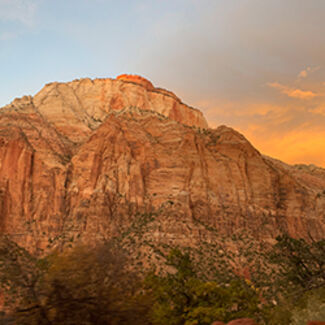
Arthur M.

8/23/2023
Very well, My trailer is used on a weekly basis and this item has keep my trailer in road ready condition
Well made. It gives a finishing touch to wheel hub. It is better than the hammered cover from previous owner.

Both caps flew off my trailer on the freeway. Had to get something different.

Have them for about a year, no issues. Bought multiple for extras. True to size. I did need to lightly tap into place. I advise to buy a cheap micrometer to measure your original caps for proper sizing. Will buy again when needed.
I'm very pleased. The item was shipped and received quickly, and the diameter of the dust caps' diameters measured exactly what they were nominally listed as (1.98"). They were also cheaper with etrailer than anyplace else, in my online search.
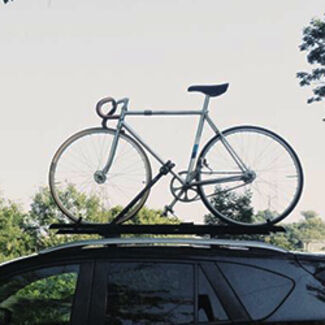
Steve M.

6/7/2017
I ordered the wrong size. I just tried to install them, and found that the bore is substantially larger. I have a Haul Master trailer from Harbor Freight. Do you have the right grease caps?

Purchased to repair/replace Bolen's HT-20 tractor front wheel bearings.
Easily installed by driving into hub with scrap wood and hammer.
Affordable, relatively quick repair completed in between snow storms.
Thank you again eTrailer!
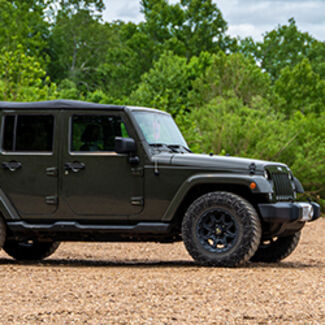
Christian

2/11/2022
Worked great for my 1980 Bolens HT-20, thanks
Thought these were right for the 3500lbs. drop axle with the EZ lube hubs but they were just a hair too big, had to bend the flange in a bit and then beat the hell out of 'em but they work. My old dust covers from my old axle were not deep enough and the EZ lube grease zerks would hit the inside of the cap.
I replaced all the bearings races seals and brakes on a small travel trailer. Bill P.at etrailer took my order and three days later I had everything in my hands. Great job Bill ! All the parts were exact replacements and the install went very smooth. There is video help on their website to show how to make the install easier. I have been dealing with etrailer for several years and have never had a bad experience. I was completely blown away by the pre assembled brakes . Backing plate, shoes, actuators, self adjusters and wiring all ready to bolt on. How much easier can it be? With the best prices, fast shipping and great help on line etrailer is the way to go.

Used these on a homemade flatbed reusing an old camper axle from the 50's the numbers on the old bearings did not cross to anything current, fortunately E Trailer has the specs online a few measurements with a caliper and you are in business. Thanks E Trailer
Can't say enough good things about etrailer knowledge, service and speedy delivery. It's a regular encyclopedia for trailer parts. Ricky knew exactly what I needed, me being a first-timer on wheel bearing replacement and repacking. These grease caps took some pounding (with a rubber mallet) but went on my 8-91A Dexter hubs nice and tight without a dent.
Replaced the existing caps that had access to the grease fittings with a rubber grommet for a cover. I don't think greasing the bearings from the end of the axle is the way to go. I took some steel wool and roughed up the outside and painted them with black paint to match the hub.
I ordered new wheel bearing kit’s, extra cotter pin’s and hub end cap’s because one fell off going down the road. All the parts were right and came in good condition I just installed them part yesterday everything went really good and easy. Thank you for having all he parts I needed.
Without the grease caps, the new bearings won't last long ... and you could even lose a wheel ( or a trailer with cargo !!). If you have a trailer and need parts of any kind, etrailer.com is THE place to go ..get it right and get it fast !
First time buyer @ etrailer, web-site was easy to navigate and find what I needed at a very good price. Shipping was very quick. Parts installed without any problems... very nice fit.
Thanks, will be looking forward to our next shopping trip.
The grease caps had a very snug fit on my trailer, so it took a lot of tapping to get them on, but that is a good thing. The old grease caps were apparently loose enough that one fell off. Great product, thank you!

The grease caps were excellent. I installed them with an install tool on both of my boat trailers. I used an install tool for doing this, which made the job easier.
Not much I can say about a replacement bearing cap set. I lost one of my old caps on my last camping trip and decided it was a good time to pull apart the bearings and replace them. The new cabs have a nice machined metal look
The caps were exactly what I hoped them to be,
the pictures with the items help me identify the part I need, thanks etrailer
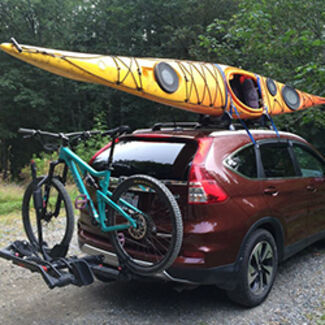
Terry

4/19/2016
Great! the lug bolts were perfect also

I replace the bearing, races, seals, and dust caps and all are working flawlessly.
Not much to say. Fits perfectly (using the dust cap driver tool: 151425 (290-991) Redline Dust Cap Driver Tool). I painted mine black once installed.
The parts I need at a fair price
Too big. You can make them work, but by the time you do, they’re beat to death


Brooke M.
12/6/2022
It sounds like you were close in your measurements but needed a little more accuracy. I would recommend part # PTW80157 which is a digital caliper that will measure more precisely. You would want to use it to measure the hub bore where the grease cap goes. We offer part # TRAG-DC-196 which is one point nine five seven inches in diameter, slightly smaller and part # F001524 which measures to one point nine four three inches even smaller still.
See what our Experts say about this TruRyde Trailer Bearings Races Seals Caps
- Grease Cap Solution for Trailer Hub with Hub Bore of 1.98 inchThere aren't any stainless steel grease caps with the EZ lube cap on them available in the size you need so your best option is the part # DC200L-DCRP which is zinc coated and has the cap you need.
view full answer... - Grease Cap Recommendation for Hub Bore of 1.96 inchThe part # RG04-020 might be barely too tight of a fit. Instead you would want the part # F001610 which is designed for fitting 1.96 bores on hubs like what you have. The overall height of this is 1.375 inches.
view full answer... - 2.24" Grease Cap ReplacementI have a solution for you but we do not have any standard grease caps with a 2.24" diameter like the # RG04-020 . I recommend going with the Bearing Buddy Bearing Protectors # BB2240 which will not only protect your bearings but provide an easy, safe way to monitor and control the level of grease in your axle hub. These are especially helpful on boat trailers, since they seal out all water, dirt and debris and allow for complete submersion. I've attached a brief video review of the Bearing...
view full answer... - Replacement Grease Cap for Harbor Freight TrailerHarbor freight trailers typically use metric bearings, which can make finding replacement bearings, grease seals and grease caps pretty challenging. You could very well find that you'd need to contact Harbor Freight directly. To see if anything we offer would work, use an accurate measuring tool like a digital caliper, and measure the inside diameter of the hub bore where the grease cap would insert. Click the link I've provided, and see if the diameter of any of our available grease caps...
view full answer... - Replacement Bearing Kit With Bearing Buddy Bearing Protectors To Replace Triton 07994-P KitThe Triton kit 07994-P is going to contain the same parts as 2 of our Bearing Kits # BK1-150, Grease Caps # RG04-020, EZ Caps # RG04-040 and a Grease Tube # L11390. Their kit appears to use the same TRP bearings and races as our kit. Since you are looking to switch to the Bearing Buddy Bearing Protectors # BB1980A-SS you will be able to use them with 2 of our Bearing Kits # BK1-150 and Grease # L11390. You will need a Grease Gun # L30416 to fill the hubs through the Bearing Buddy units....
view full answer... - 2.44 inch Diameter Dust Caps for Trailer Bearings on a Coromal VanWe carry the TruRyde Grease Cap, # F001520, that should work for you, but you will need to make sure that the depth of the cap will work with the existing hubs on your Coromal Van. The depth of this cap is 1.03 inches, so as long as the spindle on your van does not protrude more than 1 inch beyond the face of the hub this grease cap will work for you.
view full answer... - Standard Grease Cap to Replace EZ Lube Cap on 3,500 Trailer HubsI don't care for Bearing Buddies honestly as they make it too easy to overfill the hub and cause the grease seal to blow out. A standard grease cap would be your best option. For that you'd just need the part # RG04-020 for your 3,500 EZ lube spindles.
view full answer... - Recommended 2" Dust Caps for a 1994 Coleman Destiny TrailerFrom what I could find out about the part number 4714A0621, it looks like it is a 2 inch diameter standard grease cap. So with that being said, the TruRyde 1.988" OD Drive In Grease Cap # RG04-020 will be what I suggest. These will fit your hubs nice and securely.
view full answer... - What Size Grease Seal And Dust Cap is Needed on a 3,500 Lbs. Axle With L44649 Outer BearingThe size seal you will need will depend on the part number of your inner bearing. If the outer bearing part number is L44649 and the inner bearing part number is also L44649, then you will use a TruRyde Seals, # RG06-020. If the outer bearing part number is L44649 and the inner bearing part number is L68149, then it will be TruRyde Seals, # RG06-050. The size grease cap you will need is 1.986 inches. For the standard spindle you would use the TruRyde Grease Caps, # RG04-020. If...
view full answer... - Grease Cap with Diameter Close to 3-3/8-InchesWe have grease caps in many sizes that appear on the linked page and the nearest size to your specified 3-3/8-inches is Fulton part # F106122 which has an outer diameter of 3.358-inches.
view full answer... - Replacement Grease Dust Cap For Hub Bore Of 3.155The Fulton Grease Cap # F001531 has a outer diameter that is 3.155" where it goes into the hub. You will want to measure your hub bore to ensure that it is the correct size for your particular hub. A Digital Caliper # PTW80157 is the best way to verify the exact measurement of the hub.
view full answer... - Finding Replacement Bearing Sizes for 2006 EZLoader TrailerI spoke with EZLoader, who gave me your bearing sizes. The inner bearing is # LM48548, which measures 1.375 inches. Its matching race is # LM48510. The outer bearing is # L44649, which measures 1.063 inches. Its matching race is # L44610. You can also purchase a grease seal set, # BB60002. We also offer grease caps for 1.98 inch hub bores, such as the standard grease cap # RG04-020, and the EZ Lube grease cap # DC200L-DCRP. I've attached several review videos of these products for...
view full answer... - Correct Dust Caps for 1.78" Hub BoreThanks for sending in your picture and a tape measurement of a 1-7/8" dust cap, but we don't have any dust covers with an outer diameter of 1.875". We have a bearing protector that is 1.78" in outer diameter, which is the Fulton Grease Cap - 1.786" Outer Diameter # F001503.The next size up is a 1.988" dust cap # RG04-020. It's also possible that the hubs on your 1947 International KB-1 Truck have non-standard sizes. I highly recommend picking up a digital caliper like # PTW80157 to get...
view full answer... - Dust Cover for Trailer Hub with 1.98 inch DiameterWe have standard dust cover/caps that fit the 1.98 inch hub bore you mentioned with the part # RG04-020 but we don't have any that is chrome. Chrome plating probably wouldn't work well as it may eventually flake off.
view full answer... - Purpose of Grease Caps and How to Measure to Get Correct SizeThe purpose of the grease cap is to protect the bearing and the axle from any dirt getting into the bearing, which would then damage the bearing, hub and axle. So it is a good idea to have caps on your axle. To get the correct size cap you would need to measure the inside diameter of the cap mounting surface on your hub. Then that measurement would match up to the cap size outside diameter. The sizes of caps only vary by a small amount so the measurement has to very accurate. Some of the...
view full answer... - How To Find the Correct Dust/Grease Cap for a Trailer AxleIn order to find the correct grease cap for a trailer you will need to either measure the inner diameter of the hub bore on your trailer hub or the outer diameter of your grease cap but these are the only two ways. The measurements will need to be taken with a digital caliper which it sounds like you already have one. If you can provide me with either of the above two measurements then I would be glad to see if we have an option for you or you can browse our selection I have attached below. I...
view full answer... - Replacement Hub Components for Hub 9606020While the # L68149 most likely corresponds to the inner bearing number of your hubs. If this is the case, you have either a 3.5k or a 4.4k axle. In order to know absolutely sure, you need to know the corresponding outer bearing number or the inner and outer diameter of the grease seal. You most likely need to wipe away the grease in order to reveal the outer bearing number. In order to accomplish this, I recommend using calipers like the 4" Carbon Fiber Digital Caliper # PTW80157. I...
view full answer... - Replacement Bearing and Seal Kit for a Dexter 8-248 Idler Hub The Dexter 8-248 is a 3,500 lbs idler hub which uses the # L44649 outer # L68149 inner bearing and a 10-19 grease seal. For bearings/races/seals, you'd need the Hub Bearing Kit for Lippert, Dexter, and Al-Ko Axles - 3,500 lb with #84 Spindle item # BK2-100. If you need replacement dust caps, use item # RG04-020 for a standard spindle (sold in pairs) or item # DC200L-DCRP for an E-Z Lube spindle which is sold individually.
view full answer... - Replacement Hub, Bearing Buddy, and Rim/Tire for a Dexter 9-81A HubThere are two different Dexter 8-91 hubs that are available for a 2000 lb axle that will use different size bearings and seals. You will want to use the correct bearings and seal that are designed for that particular hub. The Dexter Trailer Hub Assembly, part # 8-91-05UC1, comes with the # L44649 inner and outer bearings, the # L44610 races, the # 10-9 grease seal, and the # RG04-020 grease cap. The Dexter Trailer Hub Assembly, part # 8-91-05UC1, comes with the # L44643 inner and...
view full answer... - How to Determine Correct Replacement Bearings and Grease Caps for Boat TrailerWe can set you up with the replacement bearings for your boat trailer, though there are some things you will need to know first. In order to find the correct bearings, you will need to take apart your hub assembly and look at the bearings themselves; wipe away the grease and you should be able to see the part number stamped directly on them. If you are unable to find them, you need to use digital caliper and measure your spindle to the thousandths of an inch where the bearings ride. You...
view full answer... - Converting Electric Brakes To Electric Over Hydraulic Disc Brakes On Triple Axle TrailerYes, we have the HydraStar Hydraulic Brake Line Kit - Triple Axle - 15' Long, 1/4" Main Line, # HS496-153. We also have a 25 foot long kit, # HS496-253. With either kit, I recommend use with the HydraStar Vented Electric Over Hydraulic Actuator for Disc Brakes - 1,600 psi, # HBA16. This will convert the electric system over to a hydraulic system with the electric motor that pushes the plunger into the hydraulic master cylinder as you brake. I assume you have 3500 lb axles, and if...
view full answer... - Are Trailer Axle Grease Caps WaterproofA grease cap like # RG04-020 is primarily intended to keep grease inside your hub bore and keep contaminants like dirt out. They are not totally water-proof by any means but they certainly do provide a degree of water-resistance. Mostly what keeps water out of your hubs is the full level of grease inside them. That is why folks like EZ-Lube spindles since they make it so much easier to ensure your hubs' grease level is always full.
view full answer... - Looking for Bearing Grease Cap that is between OD 1.99 and 2.251 We don't offer a grease cap with a diameter between 1.99 and 2.251 inches. The bearing reference number is stamped into the bearing cage, as shown in the photo I've provided. If I knew the bearing number, I can determine which race is used. The grease cap and the outer race will have the same outside diameter.
view full answer... - Recommended Bearing Kit With L44649 Bearings As Well As Grease Caps For Marine Application I recommend you get two bearing kits # BK1-150 along with the Bearing Buddy Bearing Protectors - Model 1980T-SS - Threaded - Stainless Steel (Pair) # BB1980T-SS. These are made specifically for marine applications. If you want regular grease caps, you will want # RG04-020. These are 1.988 inch outer diameter and the closest to the measurement you gave that we carry with the exception of the Bearing Buddy Caps.
view full answer...
Do you have a question about this Trailer Bearings Races Seals Cap?
Info for this part was:







At etrailer.com we provide the best information available about the products we sell. We take the quality of our information seriously so that you can get the right part the first time. Let us know if anything is missing or if you have any questions.










































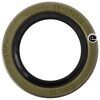
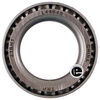













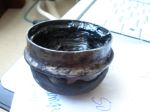


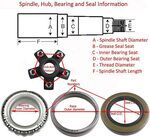
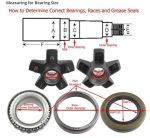

Tyler
5/8/2023
It’s been great haven’t had any problems